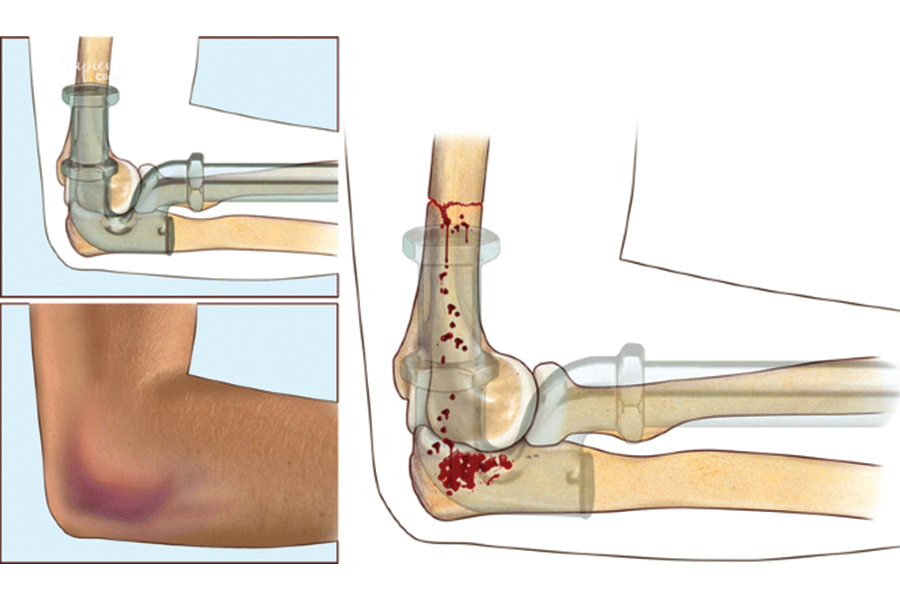Stiff Elbow: Diagnosis and Treatment in Malleshwaram
A stiff elbow, characterized by limited range of motion, can significantly impact daily activities, from personal care to occupational tasks. At Sapiens Clinic in Malleshwaram, we specialize in diagnosing and treating elbow stiffness, aiming to restore mobility and improve quality of life for our patients.
Understanding Stiff Elbow
Elbow stiffness occurs when the joint’s normal range of motion is restricted, either in flexion (bending) or extension (straightening). This condition can result from various factors, including injury, inflammation, or degenerative changes.
Causes and Risk Factors
Several factors can contribute to elbow stiffness :
- Trauma: Fractures or dislocations can lead to joint stiffness if not properly managed.
- Post-Surgical Complications: Scar tissue formation after elbow surgery may restrict movement.
- Arthritis: Both osteoarthritis and rheumatoid arthritis can cause joint degeneration and stiffness.
- Prolonged Immobilization: Extended periods of casting or splinting can lead to decreased joint mobility.
- Heterotopic Ossification: Abnormal bone growth in soft tissues following injury or surgery.
Symptoms
Common symptoms associated with a stiff elbow include:
- Limited Range of Motion: Difficulty in fully bending or straightening the arm.
- Pain or Discomfort: Especially during movement or at the end ranges of motion.
- Swelling: Around the elbow joint.
- Functional Limitations: Challenges in performing daily tasks like dressing, eating, or personal hygiene.
Diagnosis
A comprehensive evaluation is essential for accurate diagnosis :
- Medical History and Physical Examination: Assessing the onset, duration, and severity of symptoms.
- Imaging Studies: X-rays to detect bone abnormalities; MRI or CT scans for detailed soft tissue evaluation.
- Range of Motion Assessment: Measuring the degree of movement restriction.
Treatment Options
Management strategies are tailored based on the underlying cause and severity :
Non-Surgical Interventions
- Physical Therapy: Exercises to improve flexibility, strength, and range of motion.
- Manual Therapy: Techniques to mobilize the joint and surrounding soft tissues.
- Splinting: Dynamic or static splints to gradually increase motion.
- Medications: Nonsteroidal anti-inflammatory drugs (NSAIDs) to reduce pain and inflammation.
Surgical Treatments
If conservative measures fail, surgical options may be considered:
- Arthroscopic Release: Minimally invasive procedure to remove scar tissue or bone spurs.
- Open Surgical Release: For more severe cases, to address extensive soft tissue or bone involvement.
- Capsular Release: Surgical loosening of the joint capsule to improve mobility.
Recovery and Rehabilitation
Post-treatment rehabilitation is crucial for optimal outcomes:
- Early Mobilization: Initiating movement soon after treatment to prevent recurrence of stiffness.
- Continued Physical Therapy: Ongoing exercises to maintain and enhance range of motion.
- Patient Education: Guidance on activity modification and prevention strategies.
Recovery timelines vary based on the treatment approach and individual factors but generally range from a few weeks to several months.
Conclusion
Elbow stiffness can be a debilitating condition, but with timely and appropriate management, significant improvements in function and quality of life are achievable. At Sapiens Clinic, Malleshwaram, Dr. Darshan Kumar A. Jain and our dedicated team are committed to providing personalized care to address and resolve elbow stiffness effectively.
FAQs
1. Can elbow stiffness resolve without treatment?
Mild cases may improve with rest and self-care, but persistent stiffness often requires medical intervention.
2. How long does recovery take after surgery for elbow stiffness?
Recovery varies but typically spans several weeks to months, depending on the procedure and adherence to rehabilitation protocols.
3. Are there risks associated with surgical treatment?
As with any surgery, risks include infection, nerve damage, or recurrence of stiffness, but these are relatively rare.
4. What can I do to prevent elbow stiffness?
Regular stretching, avoiding prolonged immobilization, and addressing injuries promptly can help prevent stiffness.
5. When should I consult a doctor for elbow stiffness?
If you experience persistent stiffness, pain, or functional limitations in your elbow, it’s advisable to seek medical evaluation.

Leave a Reply